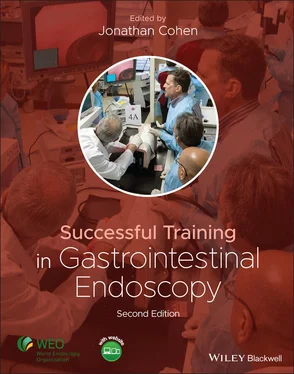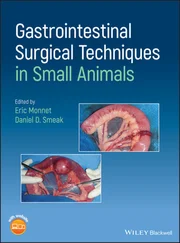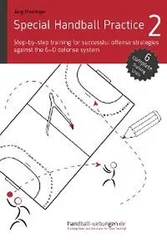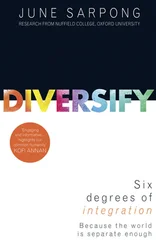Successful Training in Gastrointestinal Endoscopy
Здесь есть возможность читать онлайн «Successful Training in Gastrointestinal Endoscopy» — ознакомительный отрывок электронной книги совершенно бесплатно, а после прочтения отрывка купить полную версию. В некоторых случаях можно слушать аудио, скачать через торрент в формате fb2 и присутствует краткое содержание. Жанр: unrecognised, на английском языке. Описание произведения, (предисловие) а так же отзывы посетителей доступны на портале библиотеки ЛибКат.
- Название:Successful Training in Gastrointestinal Endoscopy
- Автор:
- Жанр:
- Год:неизвестен
- ISBN:нет данных
- Рейтинг книги:3 / 5. Голосов: 1
-
Избранное:Добавить в избранное
- Отзывы:
-
Ваша оценка:
- 60
- 1
- 2
- 3
- 4
- 5
Successful Training in Gastrointestinal Endoscopy: краткое содержание, описание и аннотация
Предлагаем к чтению аннотацию, описание, краткое содержание или предисловие (зависит от того, что написал сам автор книги «Successful Training in Gastrointestinal Endoscopy»). Если вы не нашли необходимую информацию о книге — напишите в комментариях, мы постараемся отыскать её.
Teaches trainee gastroenterologists the endoscopic skills needed to meet the medical training requirements to practice gastroenterology and helps clinical specialists refresh their skills to pass their recertification Successful Training in Gastrointestinal Endoscopy, Second Edition
Successful Training in Gastrointestinal Endoscopy, Second Edition
Successful Training in Gastrointestinal Endoscopy — читать онлайн ознакомительный отрывок
Ниже представлен текст книги, разбитый по страницам. Система сохранения места последней прочитанной страницы, позволяет с удобством читать онлайн бесплатно книгу «Successful Training in Gastrointestinal Endoscopy», без необходимости каждый раз заново искать на чём Вы остановились. Поставьте закладку, и сможете в любой момент перейти на страницу, на которой закончили чтение.
Интервал:
Закладка:
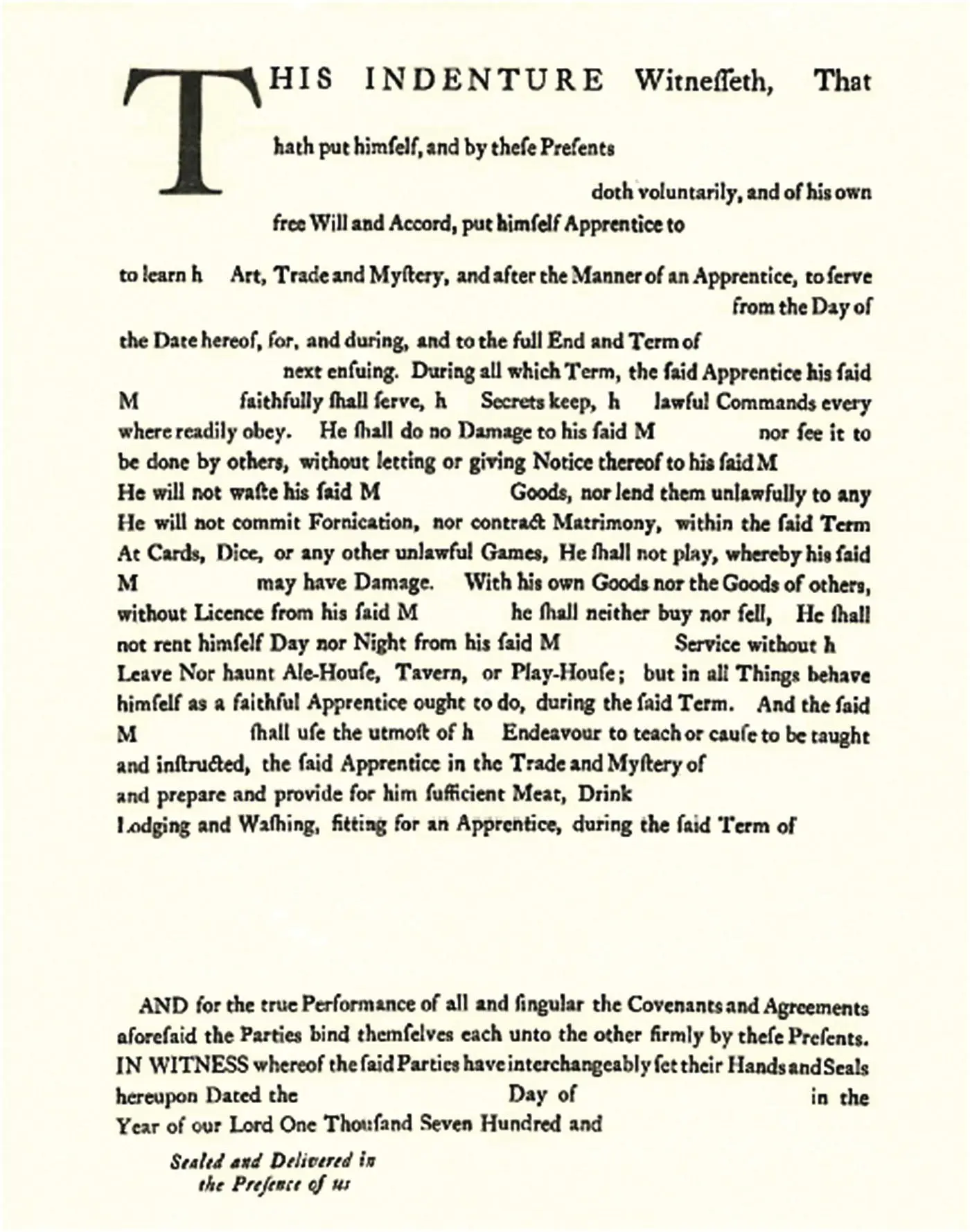
Figure 1.1 An example of a typical apprenticeship contract in colonial America, circa 1750.
Within these training programs, didactic information about endoscopy is included in the curriculum to an extent, but much of the actual endoscopic training remains directly imparted from instructor to student in the course of the performance of actual procedures on actual patients. Such hands‐on supervision allows for increasing independence on the part of the trainee, as the teacher constantly assesses both technical and cognitive progress [6, 7]. In this process, the endoscopy teacher must give the trainee sufficient time to develop skills while protecting the patient’s safety at all times, and must be able to give appropriate feedback [8, 9]. This process is both time and labor intensive. Additionally, sufficient case volume is necessary to allow for development of necessary skills through repetitive deliberate practice, and enough variation in pathology needs to be present to allow the development of cognitive skills to go along with advances in technical expertise [10, 11]. Mere possession of clinical judgment and endoscopic proficiency do not guarantee that an individual is qualified to be a good endoscopic teacher. The importance of having instructors who know how to teach and the constraints that limit the time such mentors have to devote to teaching can pose significant challenges for this “traditional method” of endoscopy training—challenges which some of the newer complementary teaching tools discussed later in this chapter were developed to address. While many of the chapters in this book refer to the importance and characteristics of good mentors, very little investigation has yet been conducted to understand how to best train the trainers to teach endoscopy. This topic is addressed in detail in Chapter 4.
What must be learned?
Guidelines for training in gastrointestinal endoscopy have been published and widely disseminated [4, 5]. Skill sets that trainees must acquire to successfully perform endoscopic procedures have been outlined [12–16] and include the following:
1 Understanding of the indications and contraindications for endoscopic procedures and risk factors for complications.
2 Knowledge of the endoscopic equipment and accessories and how to set up this equipment for use.
3 Familiarity with the endoscope control dials and buttons.
4 Dexterity in controlling the scope range of motion using the dials and torque applied to the endoscope shaft.
5 Hand–eye coordination to produce deliberate, precise manipulation of the endoscope within the lumen and of accessories.
6 Communication with nursing and technical staff regarding required assistance during the procedure.
7 Knowledge of normal anatomic landmarks and possible abnormal pathologies that might be encountered.
8 Interpretive skills to correctly identify abnormalities that are detected.
9 Judgment of how to manage appropriately those lesions that are encountered.
10 Familiarity with patient monitoring and the administration of moderate sedation.
11 Awareness of how to recognize and manage adverse events.
12 Understanding of risks and benefits of intended procedures and the ability to obtain informed consent.
13 Documentation of findings.
14 Communication of results to patients and other physicians.
Standards and end points of current endoscopic training
Since the early establishment that training in endoscopy was a high‐priority activity among academic endoscopy centers and GI societies, a great deal of effort has been devoted to assess the efficacy of training, determine learning curves for various procedures, and explore new methods for imparting proficiency. A number of important guidelines on the subject have incorporated much of this data and expert opinion on the subject [5]. One large review delved into the data for each procedure in great detail [16]. Specific chapters in this volume address training as it relates to quality in endoscopy and to specific standards for each of the major endoscopic procedures that are performed. Apart from the specific recommendations about learning particular procedures, a number of themes have emerged throughout all current guidelines, which reflect the evolution of the concepts of optimal training in endoscopy. Key principles include the following:
Specificity of training and privileging: Individuals must be trained for each particular procedure they wish to perform.
Threshold numbers for competency: Guidelines have steered away from earlier emphasis that trainees gain competence after independently performing a certain minimum number of procedures. It has been increasingly accepted that numbers do not guarantee competency; individuals develop proficiency at different rates; and accordingly, the best way to assess competency is to do so on the basis of some objective measures. Threshold numbers have been derived from evidence‐based studies in which objective competency for a particular procedure is achieved after a particular amount of training; however, these numbers are now viewed merely as a minimum amount of training that must be performed before competency can even be assessed. The end point of successful endoscopic training should be objective demonstration of competency.
Emergence of complementary teaching modalities
Why use simulators?
Simulators have been proposed as a way to facilitate endoscopic training from the time of the earliest development of the field. In fact, Rudolf Schindler described using a model stomach for practice in orientation [17]. Many of the items in the “skill sets” listed above, and particularly those that involve dexterity, hand–eye coordination, and recognition of normal anatomy and abnormal pathology, can be addressed through the use of various endoscopic simulators.
 Endoscopy simulators, including ex vivo artificial tissue, animal tissue, and virtual reality computer‐based models, provide a unique method for endoscopic teaching. These devices allow for teaching which is free from the possibility of patient discomfort or injury. This factor alone confers several benefits to the learning process. First, the stress of the learning environment is reduced for the trainee and the trainer alike. There is more time for questions and feedback than available when an actual patient is involved. The issue of reduced trainee endoscope time due to critical clinical exigencies is eliminated, and there is ample opportunity for repetition. In fact, the sequence of demonstration of proper technique, repetitive practice of skills with expert feedback, and assessment of skill are all possible in this environment. Creative teaching exercises such as demonstrating common errors and what constitute poor technique are also uniquely possible using such alternative means of instruction to the traditional proctored human endoscopy setting for instruction (Video 1.1). In this way, simulators can confer excellent opportunities for “standard” techniques to be practiced by trainees and allow for new procedures to be taught to experienced clinicians [1]. To the extent that certain models might be used independently by trainees without real‐time instructor feedback, and to the extent that simulator work might hasten the time in which trainees can perform unsupervised procedures on their own, simulators also have the potential to address the time constraints facing endoscopy instructors with substantial nonteaching clinical responsibilities of their own to fulfill. However, as we will relate below, much of the actual effective learning using endoscopy simulators does require fairly labor‐intensive expert instruction, and to date, the potential for freeing up time spent mentoring trainees has not yet been realized.
Endoscopy simulators, including ex vivo artificial tissue, animal tissue, and virtual reality computer‐based models, provide a unique method for endoscopic teaching. These devices allow for teaching which is free from the possibility of patient discomfort or injury. This factor alone confers several benefits to the learning process. First, the stress of the learning environment is reduced for the trainee and the trainer alike. There is more time for questions and feedback than available when an actual patient is involved. The issue of reduced trainee endoscope time due to critical clinical exigencies is eliminated, and there is ample opportunity for repetition. In fact, the sequence of demonstration of proper technique, repetitive practice of skills with expert feedback, and assessment of skill are all possible in this environment. Creative teaching exercises such as demonstrating common errors and what constitute poor technique are also uniquely possible using such alternative means of instruction to the traditional proctored human endoscopy setting for instruction (Video 1.1). In this way, simulators can confer excellent opportunities for “standard” techniques to be practiced by trainees and allow for new procedures to be taught to experienced clinicians [1]. To the extent that certain models might be used independently by trainees without real‐time instructor feedback, and to the extent that simulator work might hasten the time in which trainees can perform unsupervised procedures on their own, simulators also have the potential to address the time constraints facing endoscopy instructors with substantial nonteaching clinical responsibilities of their own to fulfill. However, as we will relate below, much of the actual effective learning using endoscopy simulators does require fairly labor‐intensive expert instruction, and to date, the potential for freeing up time spent mentoring trainees has not yet been realized.
Интервал:
Закладка:
Похожие книги на «Successful Training in Gastrointestinal Endoscopy»
Представляем Вашему вниманию похожие книги на «Successful Training in Gastrointestinal Endoscopy» списком для выбора. Мы отобрали схожую по названию и смыслу литературу в надежде предоставить читателям больше вариантов отыскать новые, интересные, ещё непрочитанные произведения.
Обсуждение, отзывы о книге «Successful Training in Gastrointestinal Endoscopy» и просто собственные мнения читателей. Оставьте ваши комментарии, напишите, что Вы думаете о произведении, его смысле или главных героях. Укажите что конкретно понравилось, а что нет, и почему Вы так считаете.
